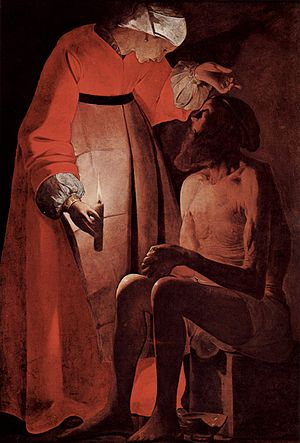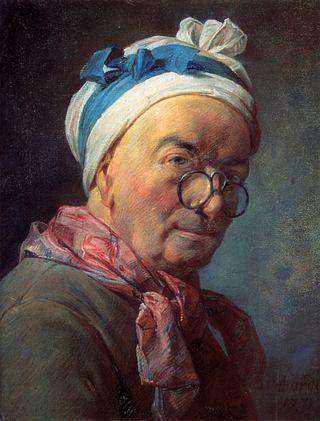
Jean Siméon Chardin was an 18th-century French painter. He is considered a master of still life, and is also noted for his genre paintings which depict kitchen maids, children, and domestic activities. Carefully balanced composition, soft diffusion of light, and granular impasto characterize his work.
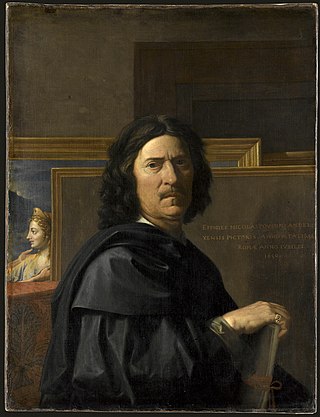
Nicolas Poussin was a French painter who was a leading painter of the classical French Baroque style, although he spent most of his working life in Rome. Most of his works were on religious and mythological subjects painted for a small group of Italian and French collectors. He returned to Paris for a brief period to serve as First Painter to the King under Louis XIII and Cardinal Richelieu, but soon returned to Rome and resumed his more traditional themes. In his later years he gave growing prominence to the landscape in his paintings. His work is characterized by clarity, logic, and order, and favors line over color. Until the 20th century he remained a major inspiration for such classically-oriented artists as Jacques-Louis David, Jean-Auguste-Dominique Ingres and Paul Cézanne.

Jean-Antoine Watteau was a French painter and draughtsman whose brief career spurred the revival of interest in colour and movement, as seen in the tradition of Correggio and Rubens. He revitalized the waning Baroque style, shifting it to the less severe, more naturalistic, less formally classical, Rococo. Watteau is credited with inventing the genre of fêtes galantes, scenes of bucolic and idyllic charm, suffused with a theatrical air. Some of his best known subjects were drawn from the world of Italian comedy and ballet.
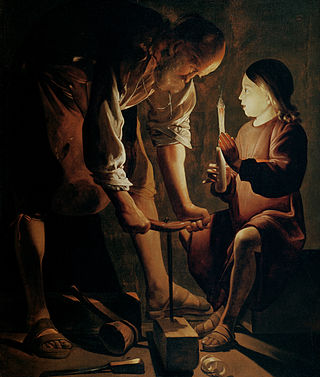
Georges de La Tour was a French Baroque painter, who spent most of his working life in the Duchy of Lorraine, which was temporarily absorbed into France between 1641 and 1648. He painted mostly religious chiaroscuro scenes lit by candlelight.

Maurice Quentin de La Tour was a French painter who worked primarily with pastels in the Rococo style. Among his most famous subjects were Voltaire, Rousseau, Louis XV and the Madame de Pompadour.

Albert Gleizes was a French artist, theoretician, philosopher, a self-proclaimed founder of Cubism and an influence on the School of Paris. Albert Gleizes and Jean Metzinger wrote the first major treatise on Cubism, Du "Cubisme", 1912. Gleizes was a founding member of the Section d'Or group of artists. He was also a member of Der Sturm, and his many theoretical writings were originally most appreciated in Germany, where especially at the Bauhaus his ideas were given thoughtful consideration. Gleizes spent four crucial years in New York, and played an important role in making America aware of modern art. He was a member of the Society of Independent Artists, founder of the Ernest-Renan Association, and both a founder and participant in the Abbaye de Créteil. Gleizes exhibited regularly at Léonce Rosenberg's Galerie de l’Effort Moderne in Paris; he was also a founder, organizer and director of Abstraction-Création. From the mid-1920s to the late 1930s much of his energy went into writing, e.g., La Peinture et ses lois, Vers une conscience plastique: La Forme et l’histoire and Homocentrisme.
Laurent de La Hyre was a French Baroque painter, born in Paris. He was a leading exponent of the neoclassical style of Parisian Atticism.

Louis-Jean-François Lagrenée was a French rococo painter and student of Carle van Loo. He won the Grand Prix de Rome for painting in 1749 and was elected a member of the Académie royale de peinture et de sculpture in 1755. His younger brother Jean-Jacques Lagrenée was also a painter.

Pierre Max Rosenberg is a French art historian, curator, and professor. Rosenberg is the honorary president and director of the Musée du Louvre in Paris, and since 1995, he has held the 23rd seat of the Académie Française. He was Slade Professor of Fine Art at the University of Cambridge in 1987.
Events from the year 1717 in art.

Trophime Bigot (1579–1650), also known as Théophile Bigot, Teofili Trufemondi, the Candlelight Master, was a French painter of the Baroque era, active in Rome and his native Provence.

Pierre-Jacques Cazes was a French painter who specialized in religious and mythological subjects. He also taught several other French artists including François Boucher and Jean-Siméon Chardin.

Magdalene with the Smoking Flame is a c. 1640 oil-on-canvas depiction of Mary Magdalene by French Baroque painter Georges de La Tour. Two versions of this painting exist, one in the Los Angeles County Museum of Art and the other in the Louvre Museum.
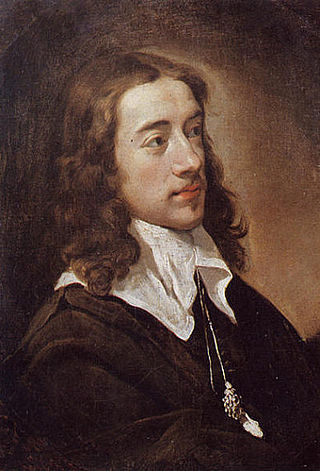
Louis Testelin (1615-1655) was a French painter.

Saint Sebastian Tended by Saint Irene is a c.1649 oil-on-canvas painting by Georges de La Tour. It is one of the largest known paintings by the artist and his most ambitious composition. It was rediscovered in 1945 in the parish church of Bois-Anzeray and acquired by the Société des amis du Louvre for the Louvre in 1979 as inventory number R.F. 1979–53.
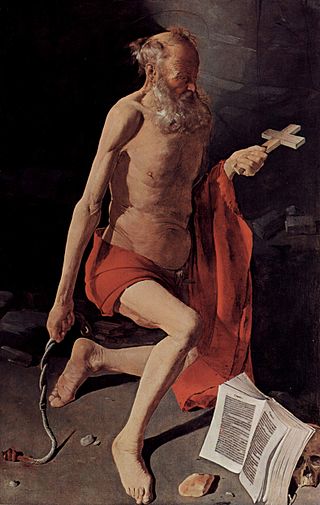
St Jerome at Prayer is an oil-on-canvas painting executed ca. 1630–1635 by the French artist Georges de La Tour. He produced it for the abbey of Saint Antoine a Viennois, but it was confiscated by the state on the French Revolution and is now in the Museum of Grenoble. An autograph copy with some variations was produced sometime before 1642 and is now in the Nationalmuseum in Stockholm.

The Hurdy-Gurdy Player is an oil-on-canvas painting by Georges de La Tour. The artist neither signed nor dated it, but it was produced in the first phase of his career, probably between 1620 and 1625. It is also known as The Hurdy-Gurdy Player in a Hat or The Hurdy-Gurdy Player with a Fly. It is now in the Musée d'Arts de Nantes.

The Hurdy-Gurdy Player with a Dog is an oil-on-canvas painting by the French artist Georges de La Tour (1593–1652), now in the Musée du Mont-de-Piété de Bergues. It belongs to his early period and forms part of a set of works on the same subject, which also includes The Hurdy-Gurdy Player. He is also featured in The Musicians' Brawl.

The Musicians' Brawl is an oil-on-canvas painting by the French artist Georges de La Tour, produced at an unknown date between 1620 and 1630. Previously attributed to Caravaggio, the work was in Lord Trevor's collection by 1928. It was reattributed to de la Tour in 1958 by Charles Sterling and Francois-Georges Pariset and sold in 1972. Its present owner, the Getty Museum, acquired it in 1973. The painting depicts two street musicians fighting as two other musicians and a woman watch.
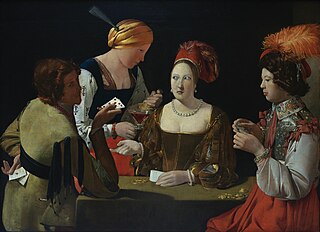
The Card Sharp with the Ace of Diamonds is an oil-on-canvas painting produced c. 1636–1638 by the French artist Georges de La Tour. It is now in the Louvre, which bought it in 1972. Though its commissioner is unknown, it is signed Georgius De La Tour fecit under the card sharp's elbow and in the shadow of the tablecloth.
